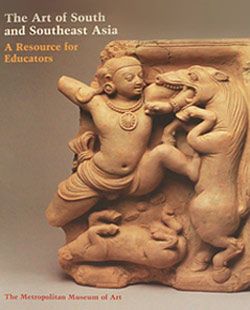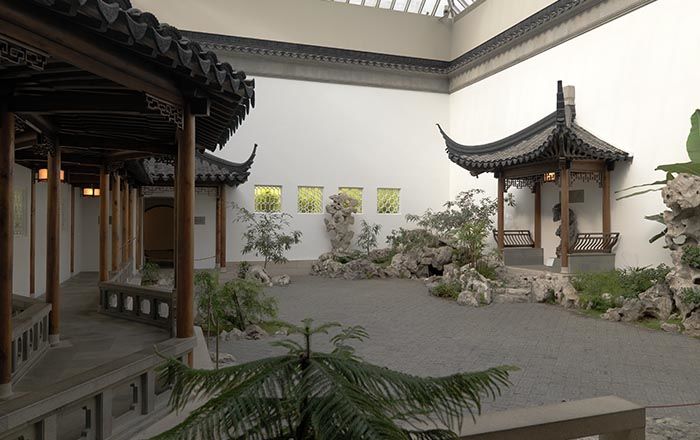Chamunda, the Horrific Destroyer of Evil
This is a fragment of a full-length sculpture portraying the ferocious Hindu goddess Kali in the form of Chamunda, an epithet derived from her act of decapitating the demons Chanda and Munda. Chamunda embodies bareness and decay. Her hair is piled up into a chignon decorated with a tiara of skulls and a crescent moon. She scowls, baring her teeth, and enormous eyeballs protrude menacingly from sunken sockets in her skeletal face. As a necklace, she wears a snake whose coils echo the rings of decaying flesh that sag beneath her collarbone. Just above her navel on her emaciated torso is a scorpion, a symbol of sickness and death. She presumably once held lethal objects in the hands of her twelve missing arms.
Chamunda is naked except for a short diaphanous dhoti partially covering the two tiger skins complete with heads that hang from her waist to her knees. Although her extremities are missing, it is clear from comparison with related images that this Chamunda stood with legs straight, the right turned outward. The starkness and uncompromising horror of this sculpture are representative of one aspect of Indian theology.
Like images of Shiva in his dark form of Bhairava, such macabre images of the Goddess are common occupants of the exterior walls of temples. They appear both on shrines dedicated to Shiva and those to the Goddess herself.
#7972. Chamunda, the Horrific Destroyer of Evil
This image cannot be enlarged, viewed at full screen, or downloaded.



